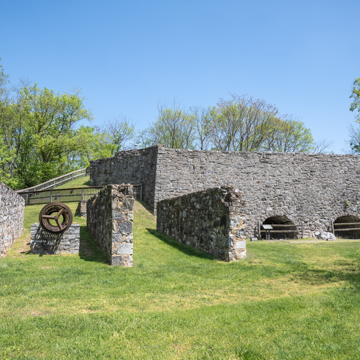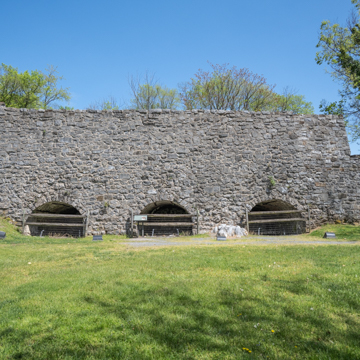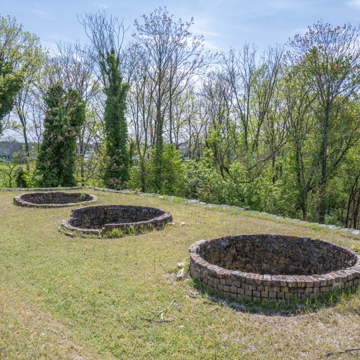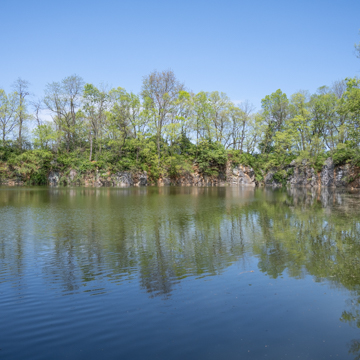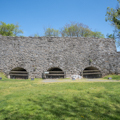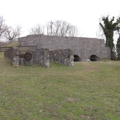This former limestone quarry and kiln complex was developed by retired farmer Adam Diehl, who sought to take advantage of the limestone outcroppings on his property, just as the Frederick Branch of the Pennsylvania Railroad was established to provide easy transport. Lime and other fertilizers were introduced to increase agricultural yields. Spurred by competition to the local grain industry by emerging Midwestern markets, Frederick County became the largest lime-producing region in the state. Fountain Rock operated from 1872 to 1955 and is now a county park. Extant is much of the original eight-pot kiln, banked to provide ready access to the top and bottom openings into which coal fuel was fed and burned lime collected, respectively. Adjacent are the remnants of the lime crusher, sorting shed, limestone quarry, and railroad spur. Also extant are several company-built employee houses, a combination of simple two-story, three-bay log and balloon-frame dwellings. Fountain Rock is among the few extant of the many lime kilns that once operated in the region, commercially and on individual farms.
You are here
FOUNTAIN ROCK LIME COMPANY
If SAH Archipedia has been useful to you, please consider supporting it.
SAH Archipedia tells the story of the United States through its buildings, landscapes, and cities. This freely available resource empowers the public with authoritative knowledge that deepens their understanding and appreciation of the built environment. But the Society of Architectural Historians, which created SAH Archipedia with University of Virginia Press, needs your support to maintain the high-caliber research, writing, photography, cartography, editing, design, and programming that make SAH Archipedia a trusted online resource available to all who value the history of place, heritage tourism, and learning.







